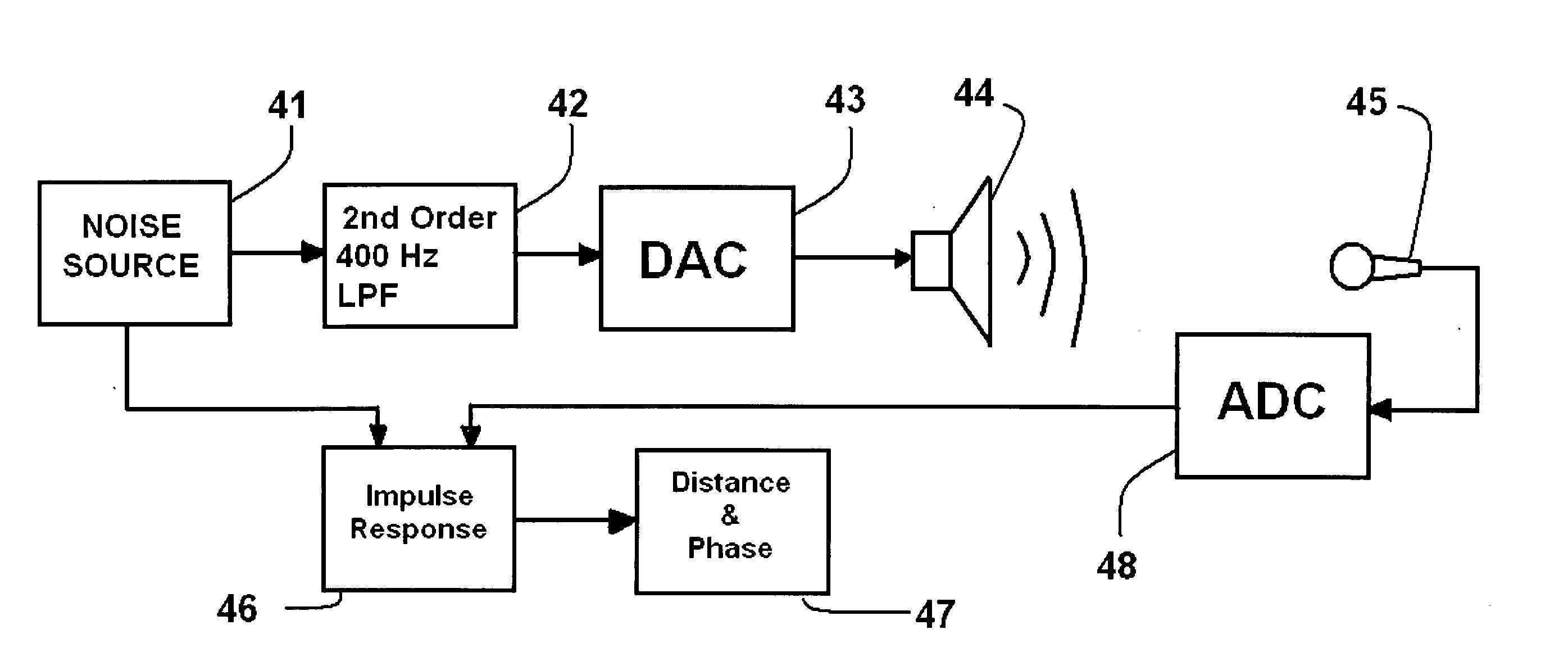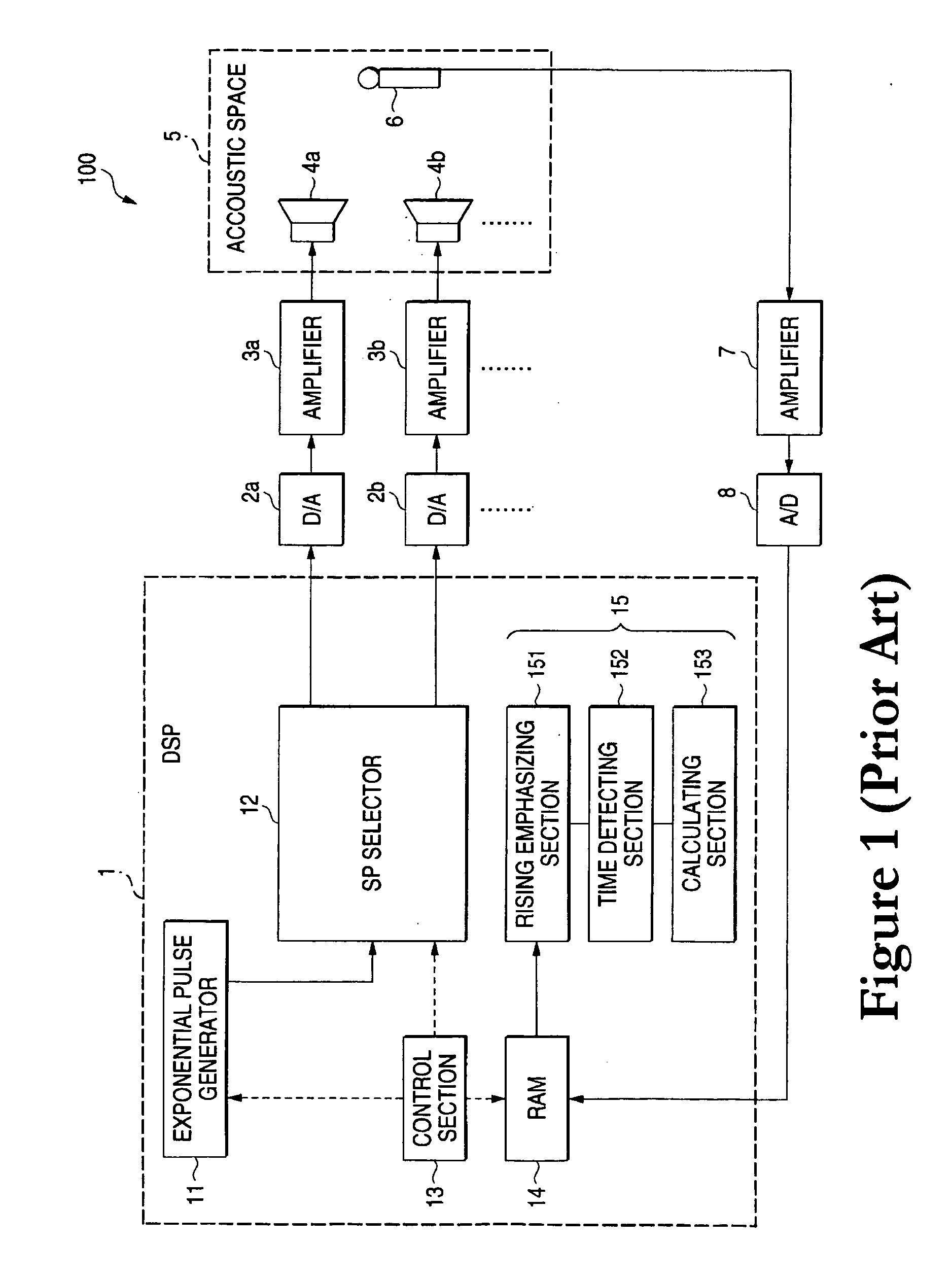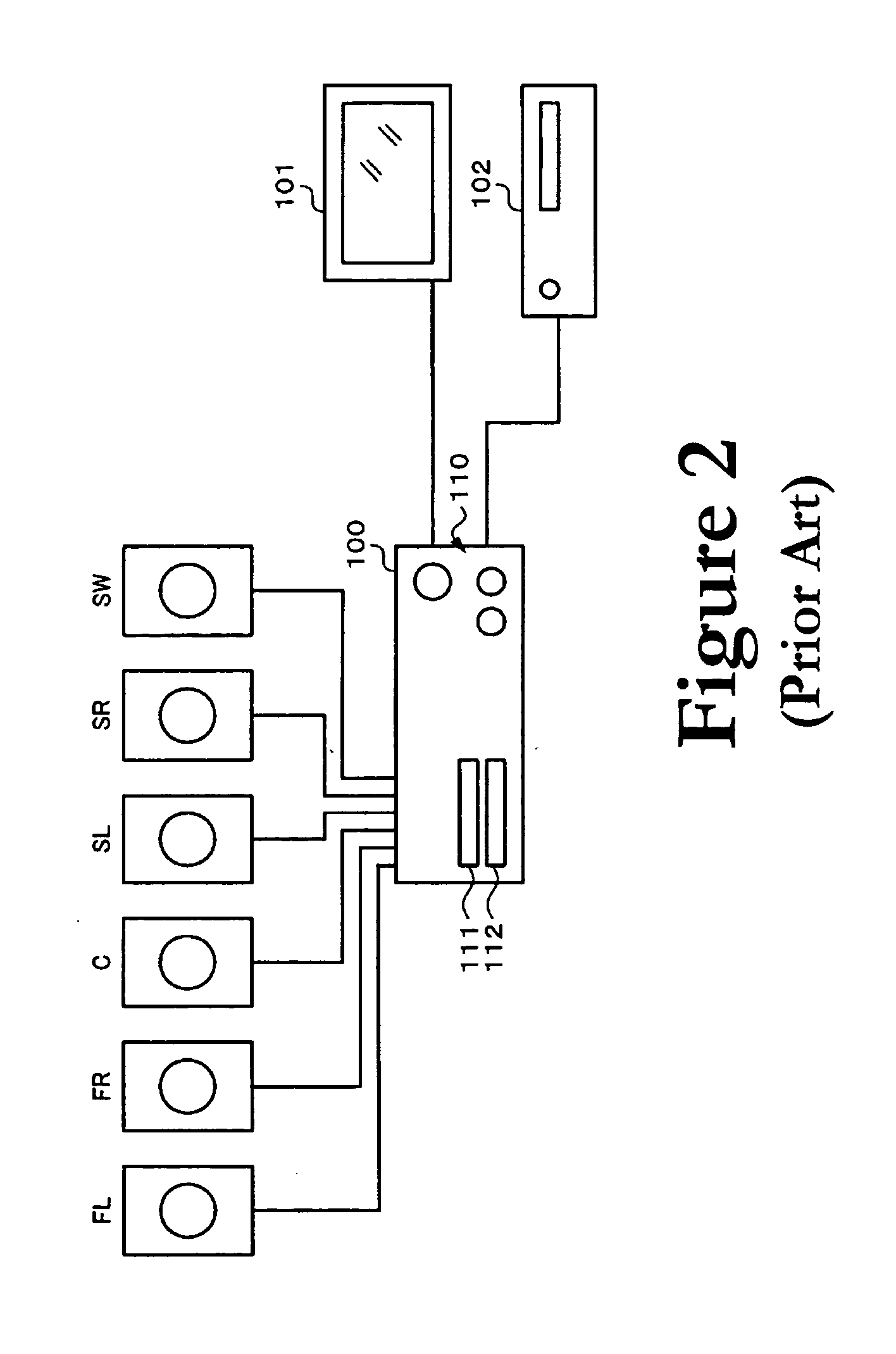Band-limited polarity detection
a polarity detection and band-limited technology, applied in the direction of stereophonic circuit arrangements, instruments, measurement devices, etc., can solve the problems of poor sound reproduction or other audio artifacts, affecting the quality of the sound reproduction, and the consumer's experience of proper setting up such home theater systems, so as to achieve the effect of not incurring any significant additional hardware costs
- Summary
- Abstract
- Description
- Claims
- Application Information
AI Technical Summary
Benefits of technology
Problems solved by technology
Method used
Image
Examples
Embodiment Construction
[0036]FIG. 3 is a block diagram of the apparatus of the present invention employing an adaptive filter for polarity detection. For the sake of simplicity, many of the basic components in an auto-setup home theater system are not illustrated here. Referring to FIG. 3, a noise source 41 may be used to generate a sound pattern or series of impulses or the like. As discussed above, this sound source could comprise a number of sound patterns generated from a stored sound pattern or generated spontaneously.
[0037] In this embodiment, the output of noise source 41 may first be passed through a second order 400 Hz low pass filter 42 to pass only those frequencies substantially below 400 Hz. A Digital to Analog Converter (DAC) 43 converts this digital sound pattern into an analog signal, which is then driven through speaker 44.
[0038] The digital signal from noise source 41 may also be sent as an input to impulse response generator 46, which in the preferred embodiment is an adaptive filter....
PUM
 Login to View More
Login to View More Abstract
Description
Claims
Application Information
 Login to View More
Login to View More - R&D
- Intellectual Property
- Life Sciences
- Materials
- Tech Scout
- Unparalleled Data Quality
- Higher Quality Content
- 60% Fewer Hallucinations
Browse by: Latest US Patents, China's latest patents, Technical Efficacy Thesaurus, Application Domain, Technology Topic, Popular Technical Reports.
© 2025 PatSnap. All rights reserved.Legal|Privacy policy|Modern Slavery Act Transparency Statement|Sitemap|About US| Contact US: help@patsnap.com



